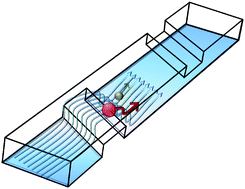Continuous hydrophoretic separation and sizing of microparticles using slanted obstacles in a microchannel†‡
Abstract
We report a microfluidic separation and sizing method of microparticles with hydrophoresis—the movement of suspended particles under the influence of a microstructure-induced pressure field. By exploiting slanted obstacles in a microchannel, we can generate a lateral pressure gradient so that microparticles can be deflected and arranged along the lateral flows induced by the gradient. Using such movements of particles, we completely separated polystyrene microbeads with 9 and 12 µm diameters. Also, we discriminated polystyrene microbeads with diameter differences of ∼7.3%. Additionally, we measured the diameter of 10.4 µm beads with high coefficient of variation and compared the result with a conventional laser


 Please wait while we load your content...
Please wait while we load your content...